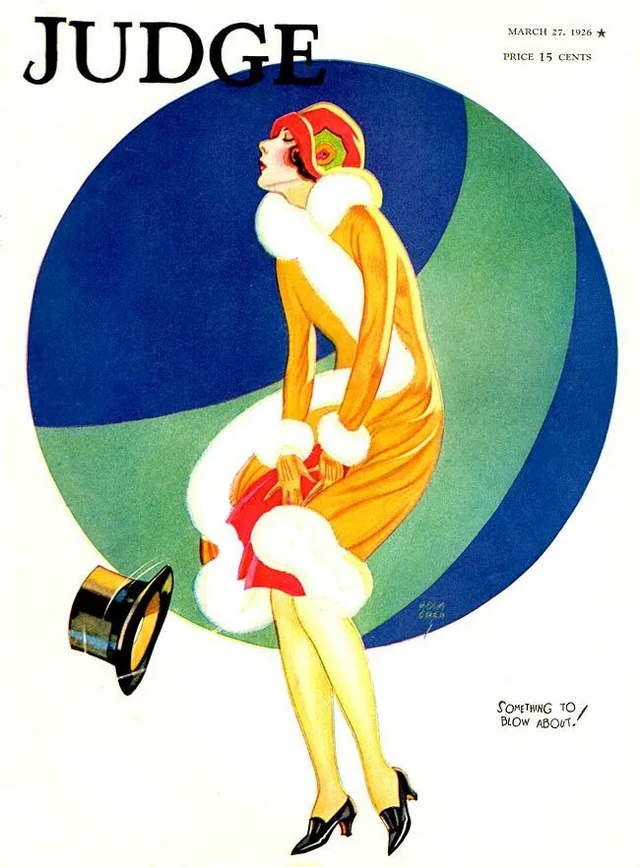Democratisation of Fashion in the 1920s
- Meg Dunham
- Jul 27
- 4 min read
Fashion has not always been as easy to access and take part in for everyone as it is now. It was originally solely for those of an upper class to be part of because part of the allure of fashion was its exclusivity, people wanted to be able to say they were part of something others were not. It was not just the upper class consumers who were drawn to the exclusivity that fashion offered, the creators were as well.

To the couturiers such as Paul Poiret one of the most popular couturiers of the 1910s, it was these high class exclusive clients that made their clothes couture, if your creations are going to the lower class masses then they are not couture, they might as well be rags. Poiret is the couturier credited with popularizing the Hobble skirt in the 1910s which was a skirt that tapered so severely toward the bottom that it actually caused the wearer to hobble as interfered with their ability to walk properly. These skirts are a wonderful representation of the separation between the upper class and their couture and the rest of society, because anyone who was not privileged enough to live a life of complete leisure was unable to wear them as they were not compatible with work or movement.
After the war and going into the 1920s fashion became more accessible because the most popular clothing and desired looks had significantly simplified in comparison to those pre-war, which is partly attributed to material shortages, and there was better infrastructure for creating an abundance of ready-to-wear items post war as there was a ton of leftover infrastructure from creating mass amounts of army uniforms. The simple designs allowed more women to participate in the trends because they were more easily able to make their own garments whether or not they had previous garment making experience and the left over infrastructure mixed with the simplicity of the garments allowed for high-volume, streamlined production of the ready-to-wears. Furthermore, because of the booming economy of the 20s more women were able to afford to buy the fashions than before which helped to bridge the divide that previously existed which kept couture with the wealthy and away from the average consumer. This increased accessibility for the average consumer can be seen in mail order catalogues like Sears, Roebuck & Co. who's fashion sections were greatly expanded to keep up with the new demand.

The changing idea of what a woman looked like or should be during this decade as a result of women entering the workforce during the war and movements like the suffragettes helped facilitate the simplifications which aided democratisation. As well, as a result of the greater employment of women during the war many women had their first taste of financial and social freedom. As a result of this women were venturing into spaces they were not before and in-turn they needed a new wardrobe that would match their new freer lives outside of the home.
Home dressmaking was also increasingly encouraged by way of advertising which pointed out how economical it can be, because there were still many women who believed fashion to be an overly expensive and unladylike activity. So the advertisements would show women with armfuls of garments touting how they had been able to make all of them for a fraction of their usual retail price. These advertisements hoped to portray fashion as a domestic and economical act so that they could find more consumers. In fact many women during this period made all of their garments themselves only buying ready-made items to complete the look such as jewelry, stockings, and other accessories.
There was also a growing tradition of brands and manufacturers copying and manufacturing the designs from the big couture houses of Paris. Brands would create these duplicates and then sell them to their consumers, with the pull being that it was high fashion looks at the average consumer's budget. They were obviously not of as high quality as the garments from the couture houses but they allowed the average consumer to achieve a look that would have previously been accessible to them.

The introduction of low-cost man made fabrics only continued grow the accessibility of fashion as they allowed for garments to be made that were previously unable to be made for ready-to-wear and the home dressmaker. This is because garments traditionally made of silk like dresses even the simplistics ones which were fashionable during the decade were still too expensive to produce at this level. However, with the introduction of Rayon also known as Art-Silk these garments were now able to be produced for a manageable non-budget-breaking price while still resembling their inspiration.
The trend of democratisation would continue into the 30s. Ready-to-wear brands grew and improved finding new ways to capitalize on the market. One example would be the Sears "Semi-Made" which was a combination of home dressmaking and ready-to-wear. The Semi-Made was a dress that arrived with certain seams left unfinished for the buyer to complete. This allowed for a more tailored fit because in finishing the seams themselves the buyer was able to make personal adjustments. The Semi-Made line were a wonderful way to achieve a closer look to what a dress altered or made by a seamstress or even by a couturier would look like for a ready-to-wear price. It was also good for the inexperienced at home dressmaker because even someone with little experience in sewing was able to finish off these easy seams. Democratisation would continue for decades to come and continues even today but the foundation for fashion accessibility among the average person was laid in the 1920s.


Comments